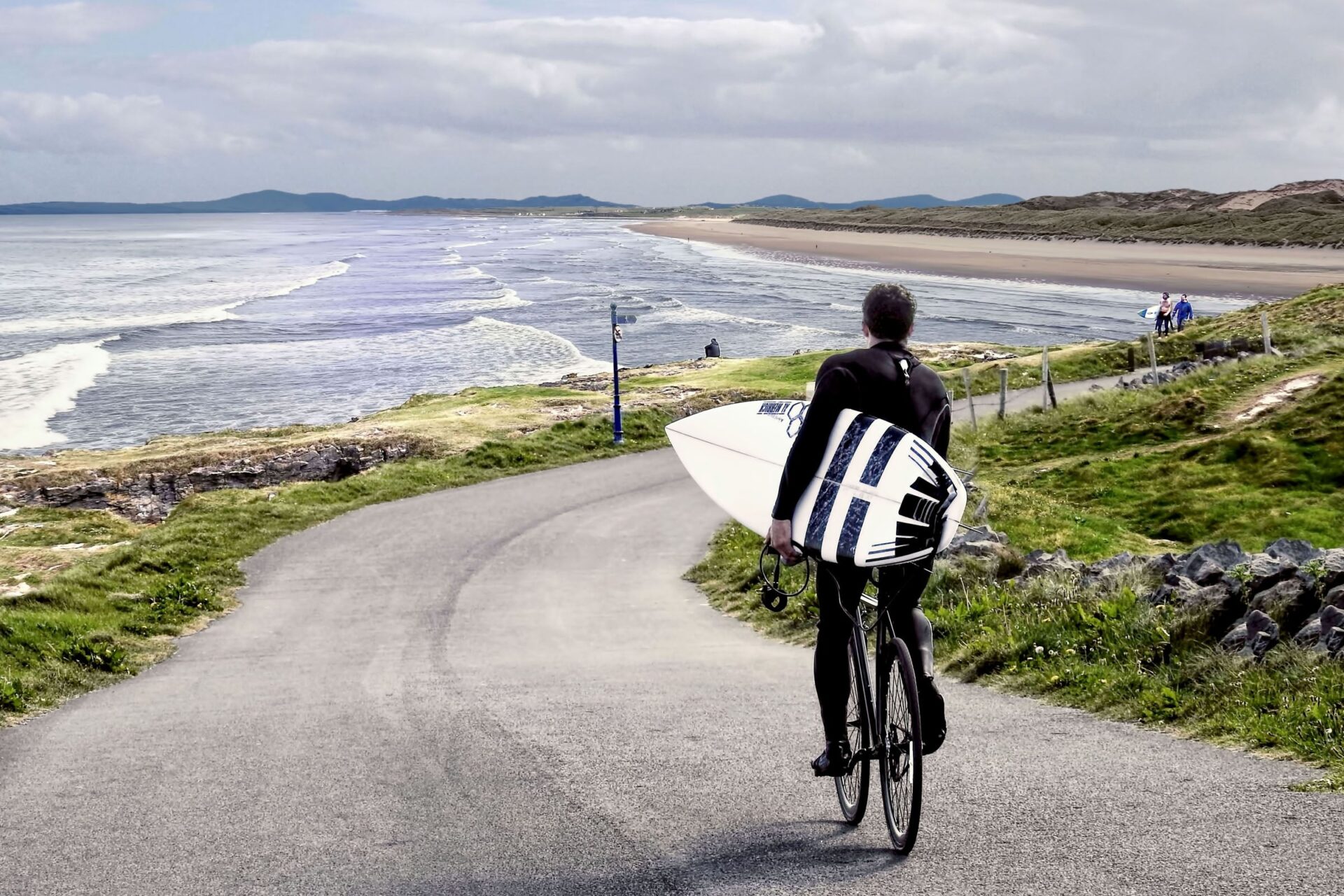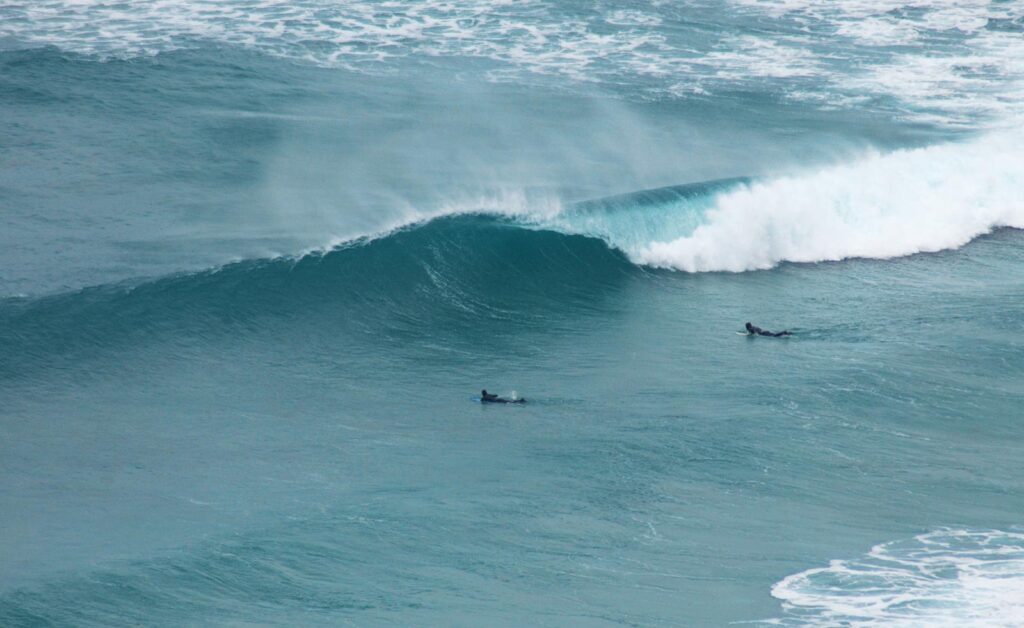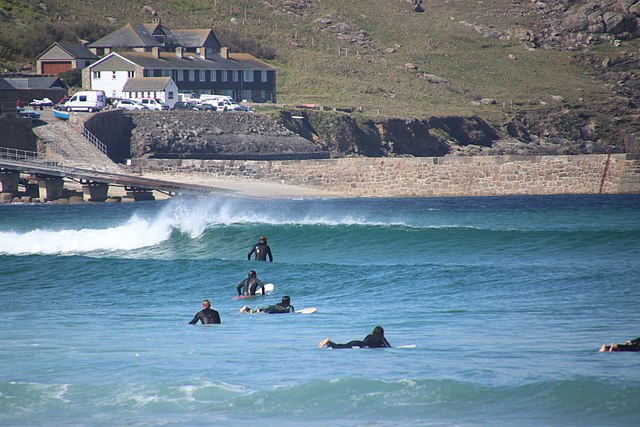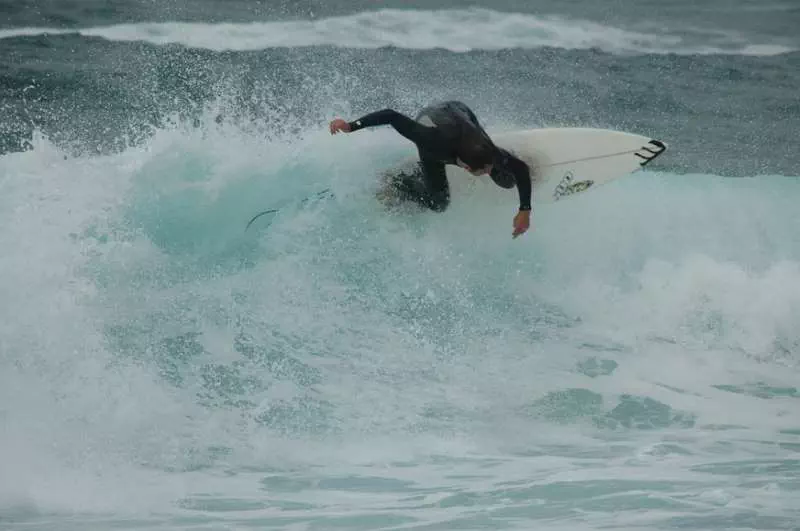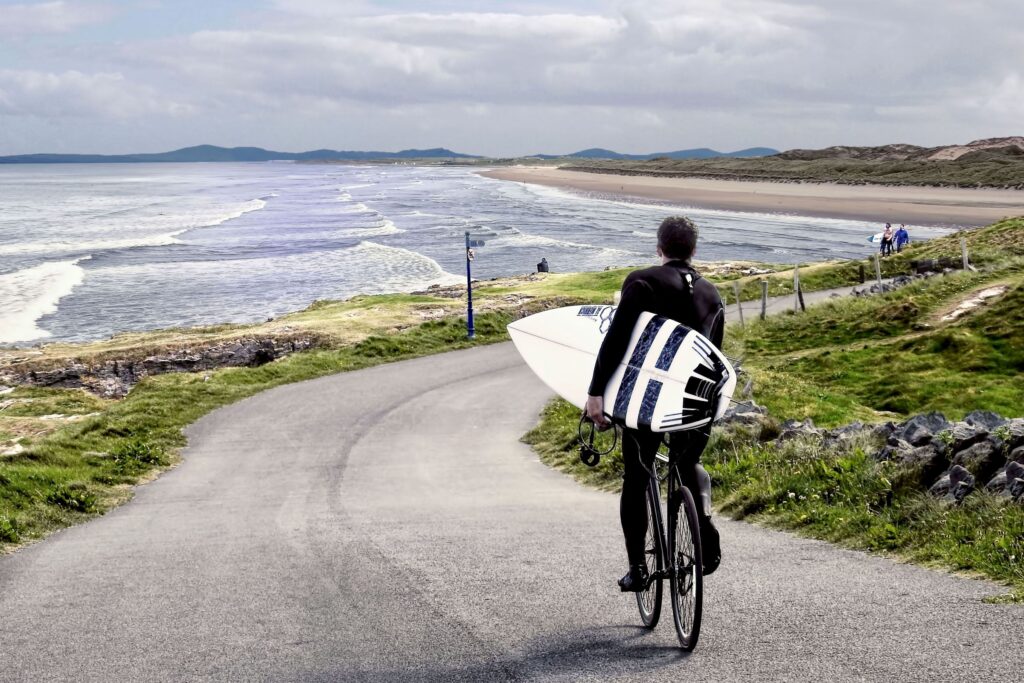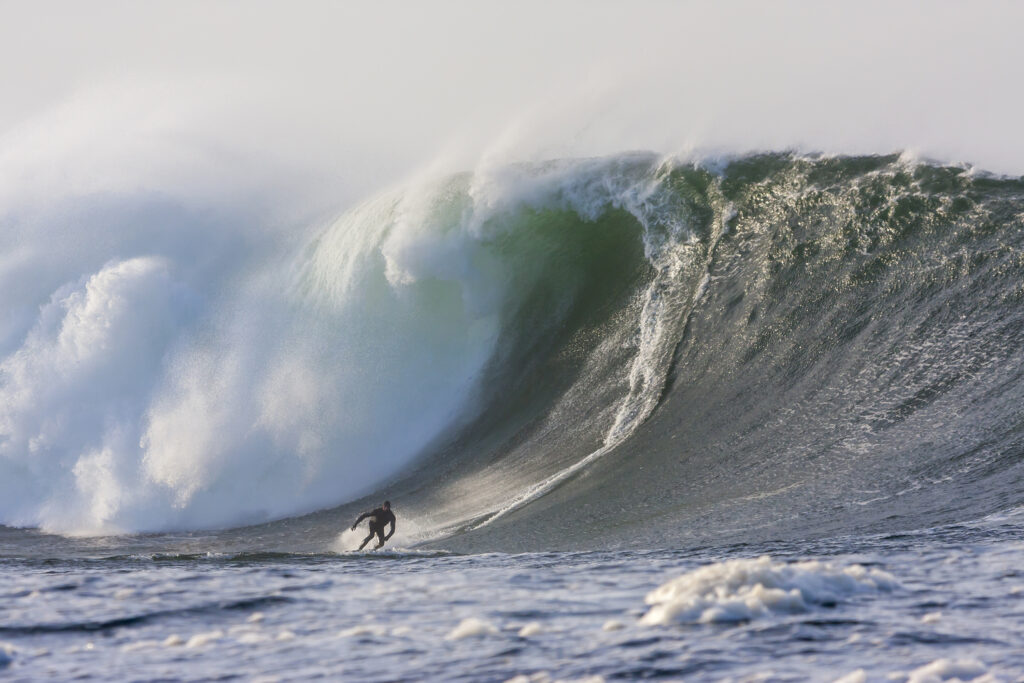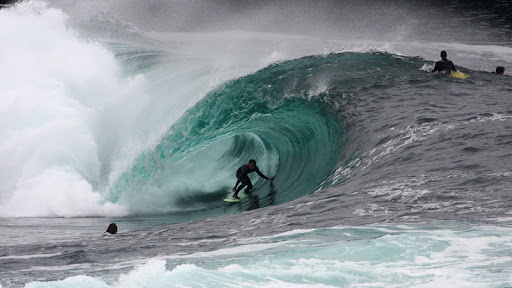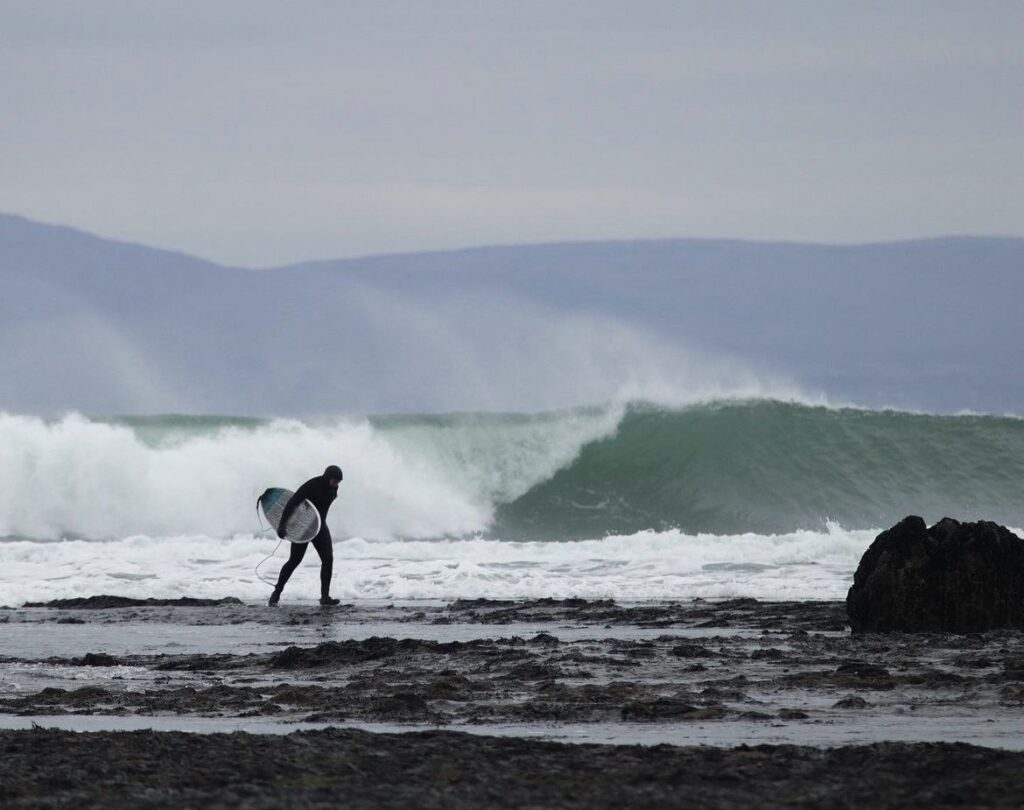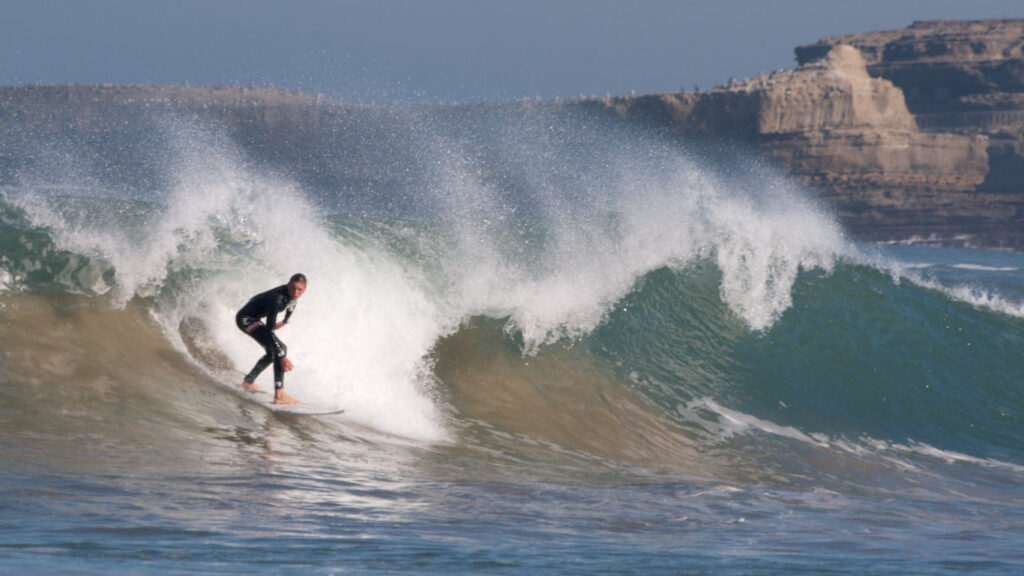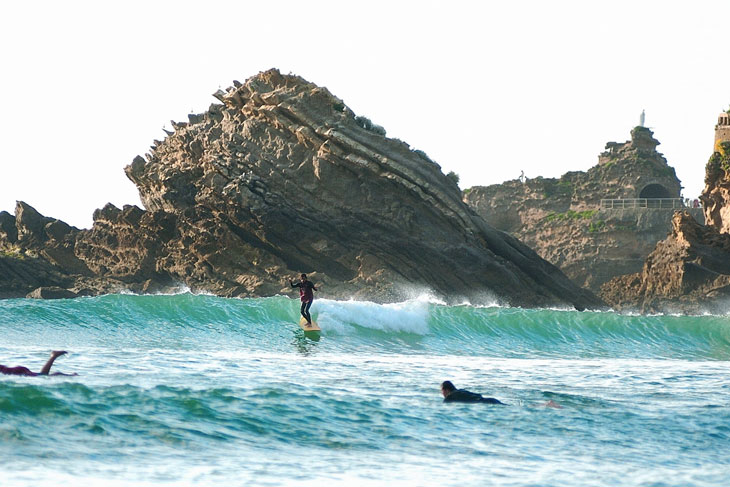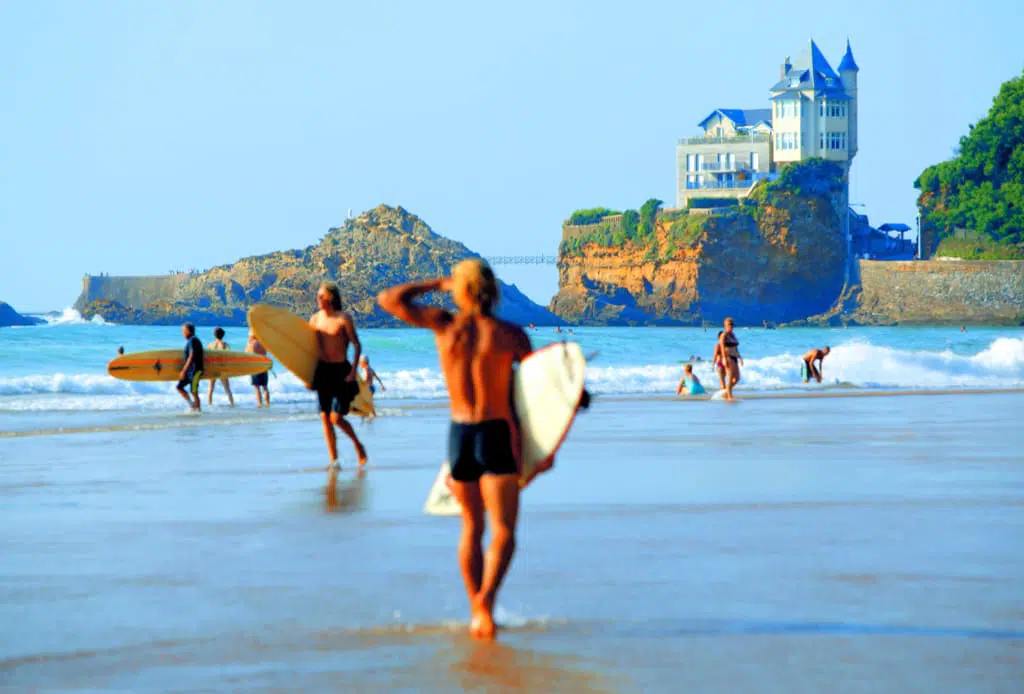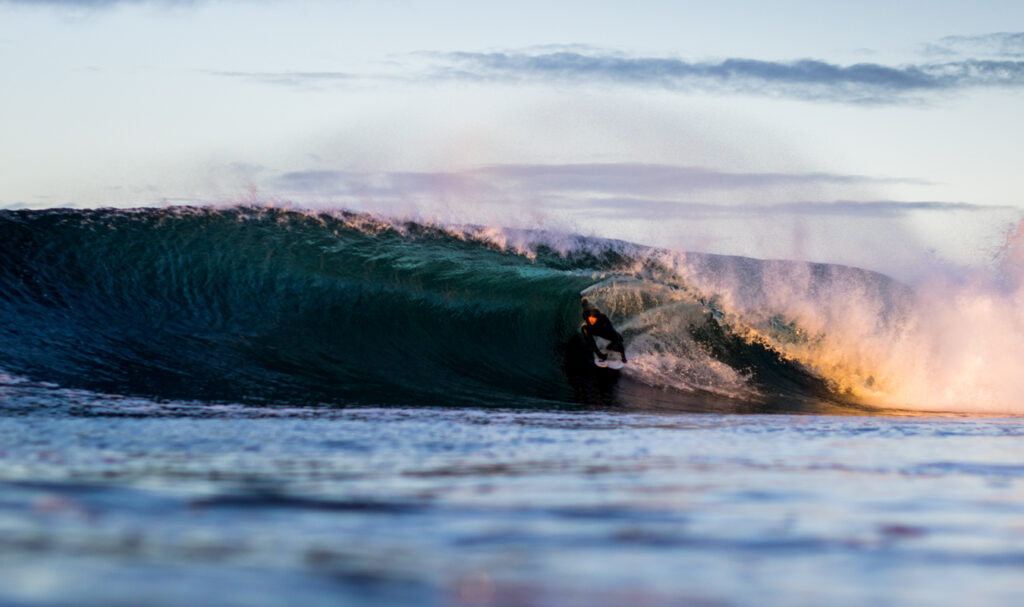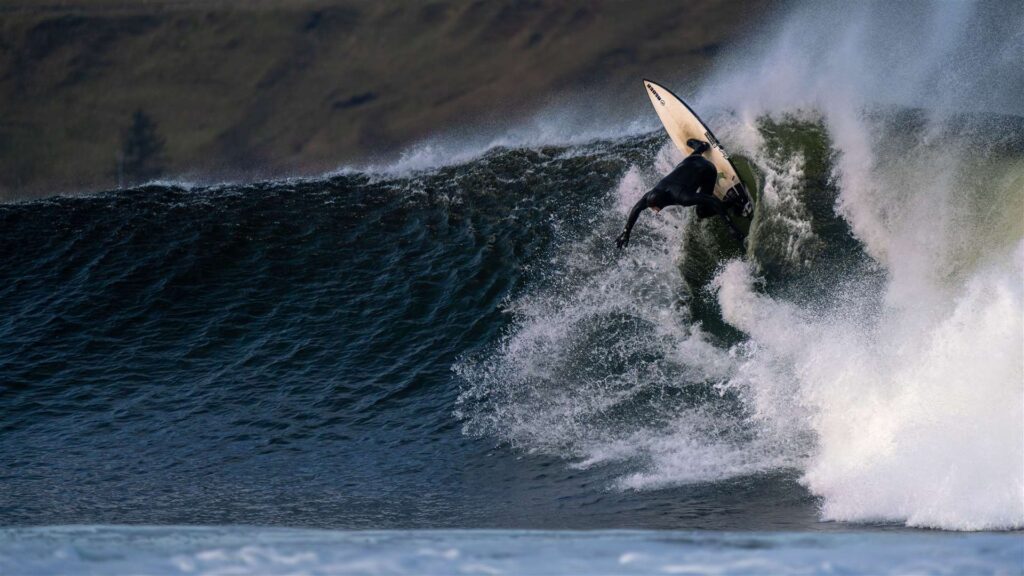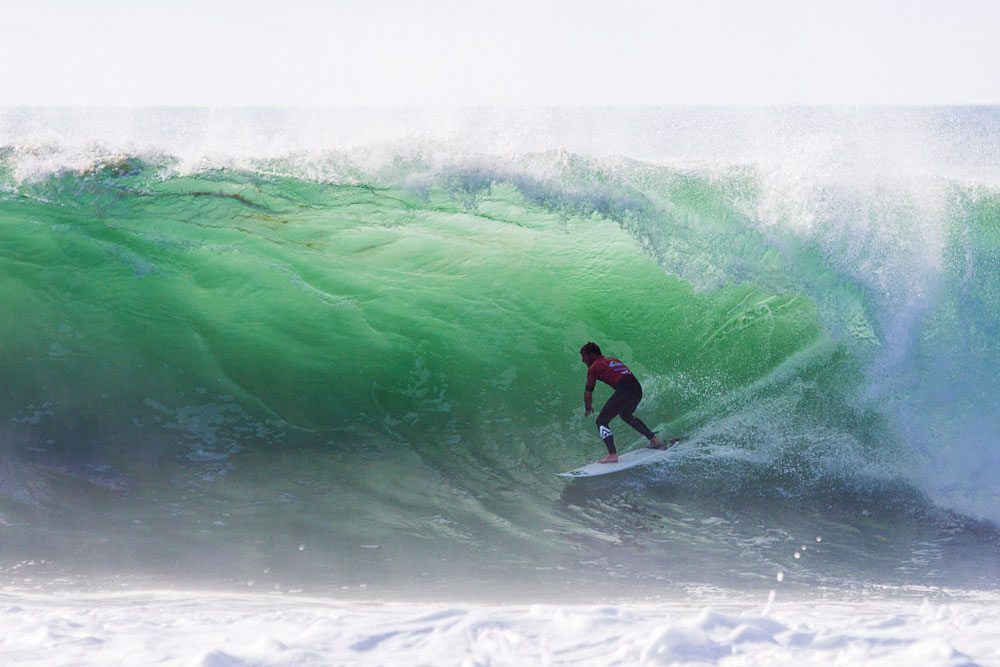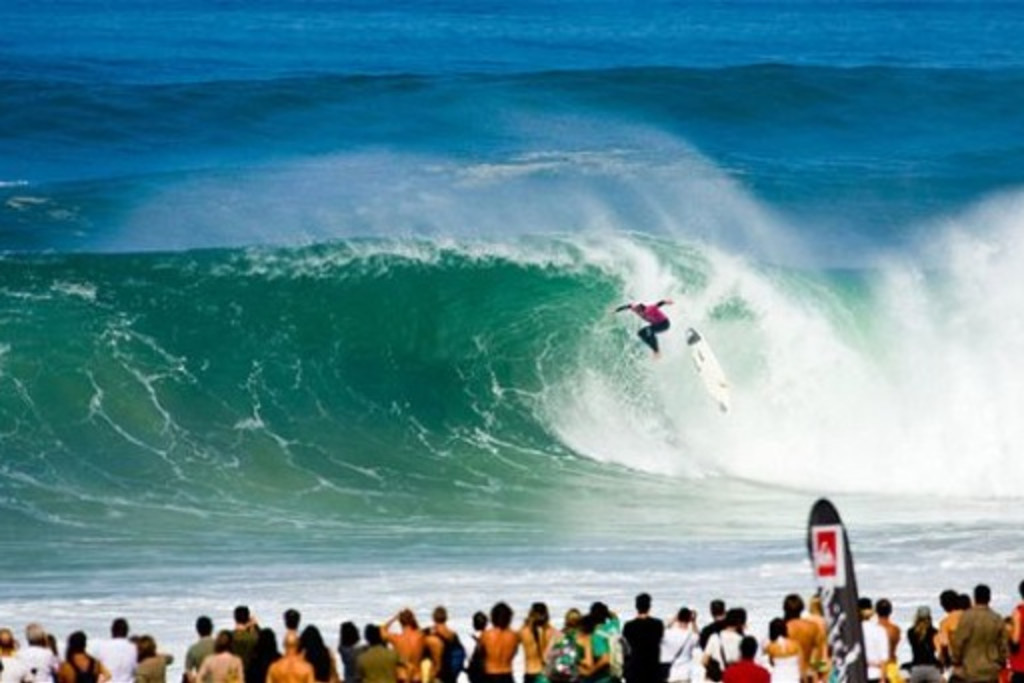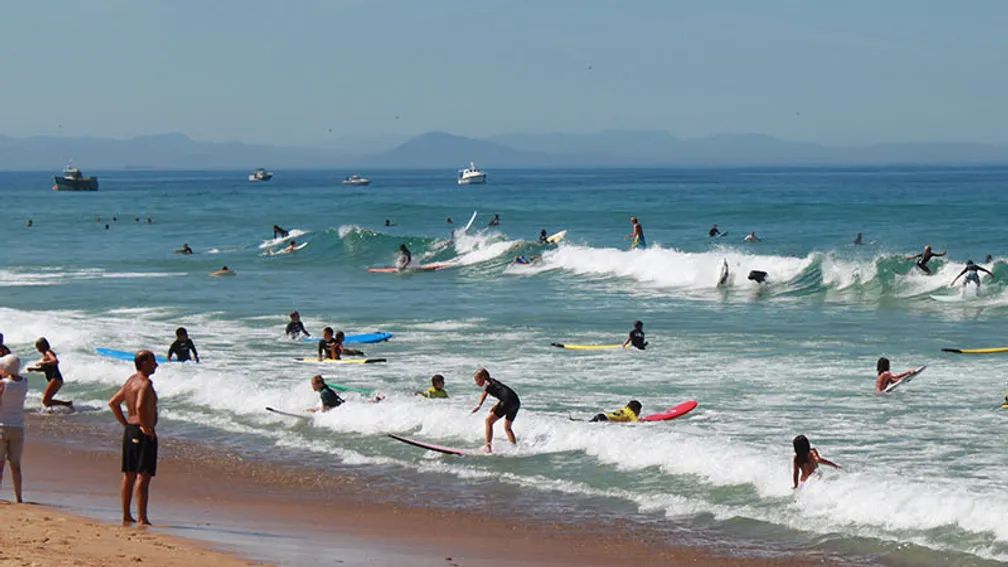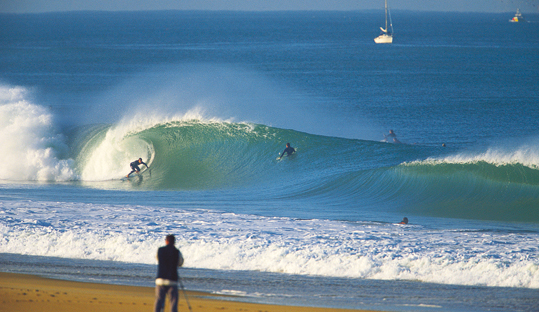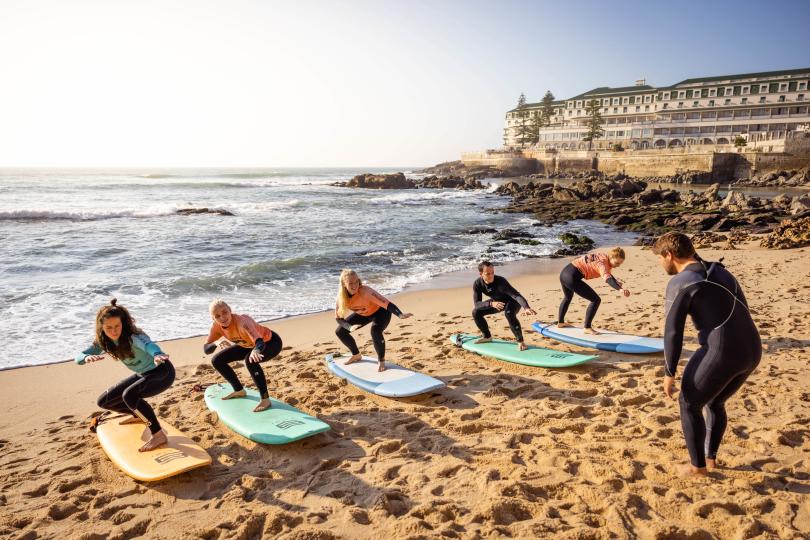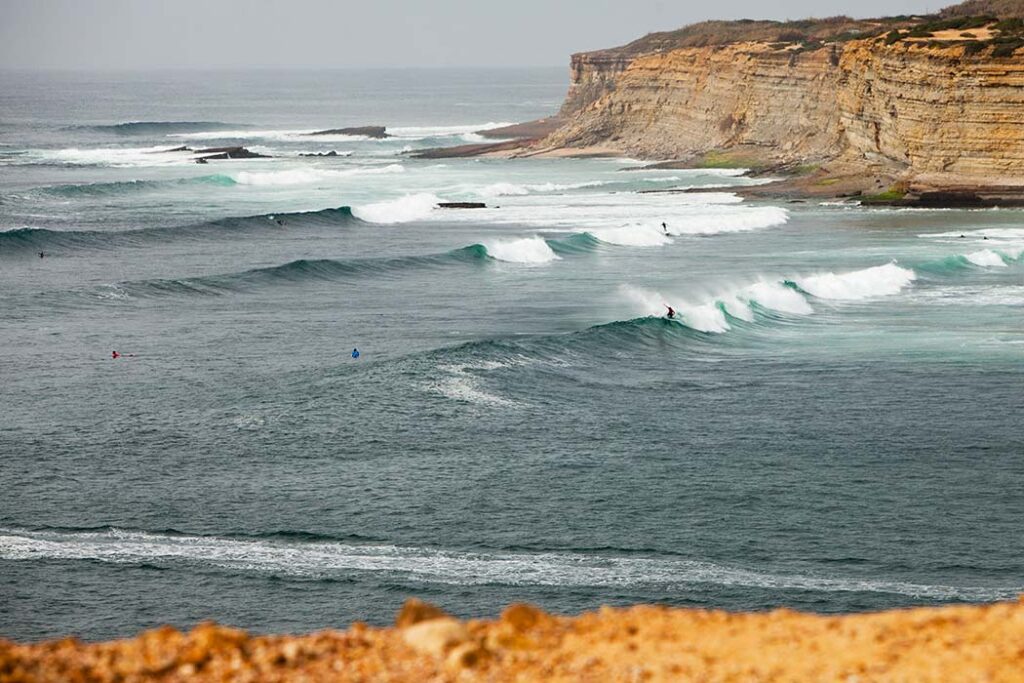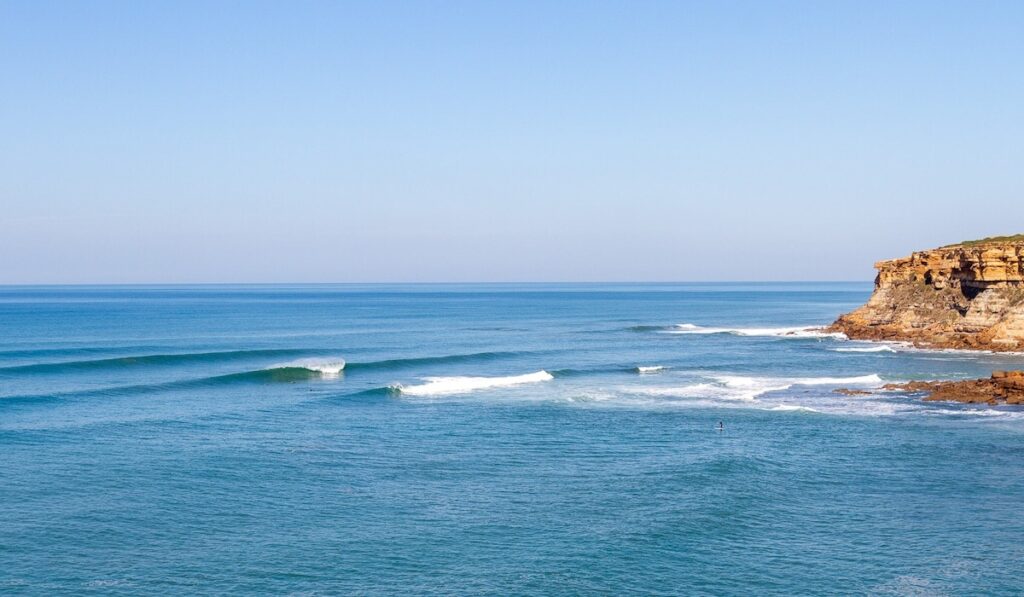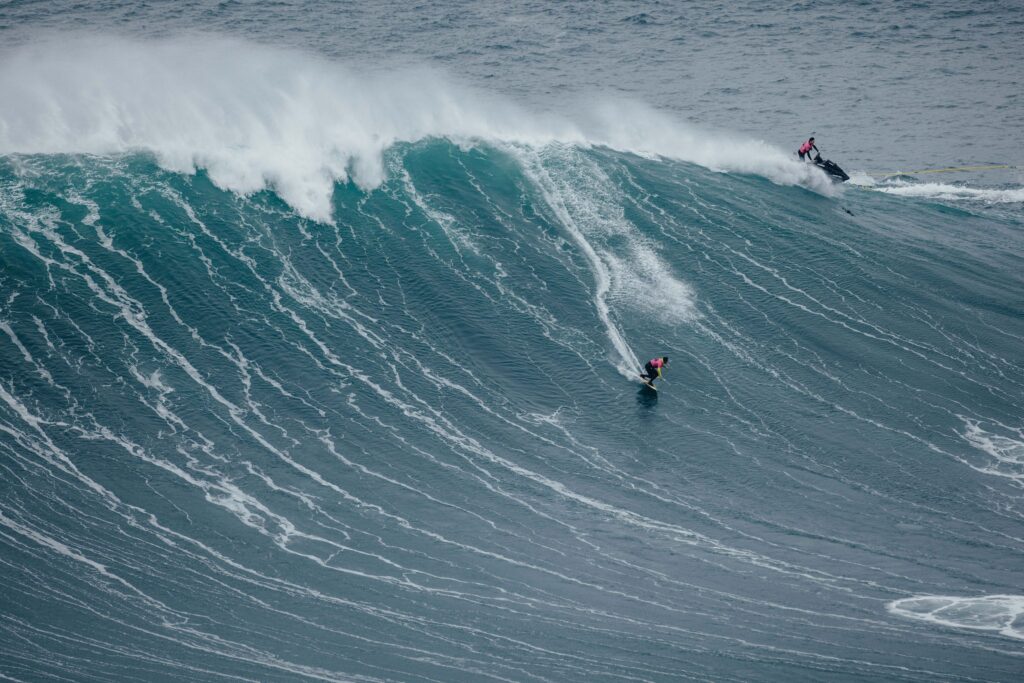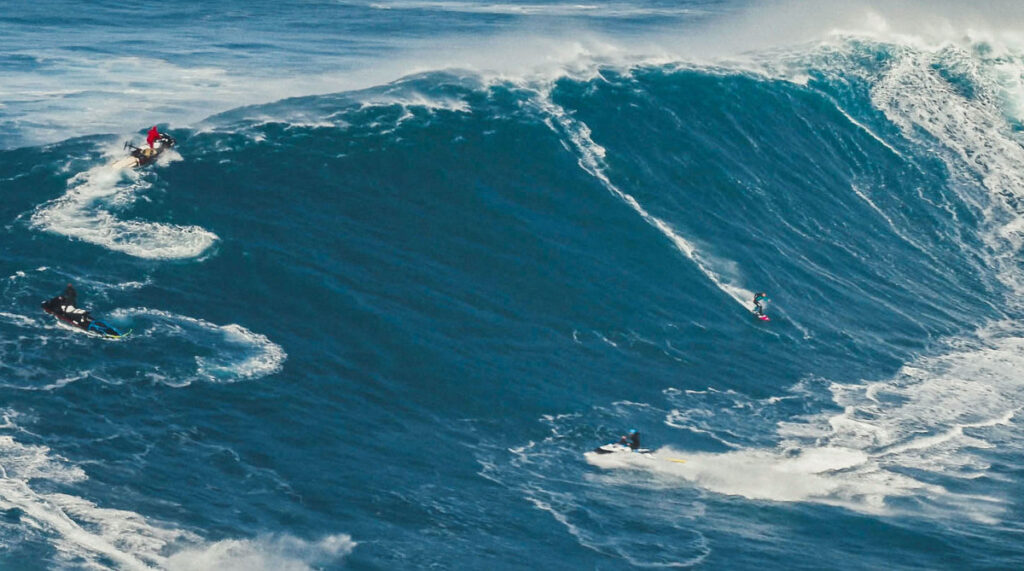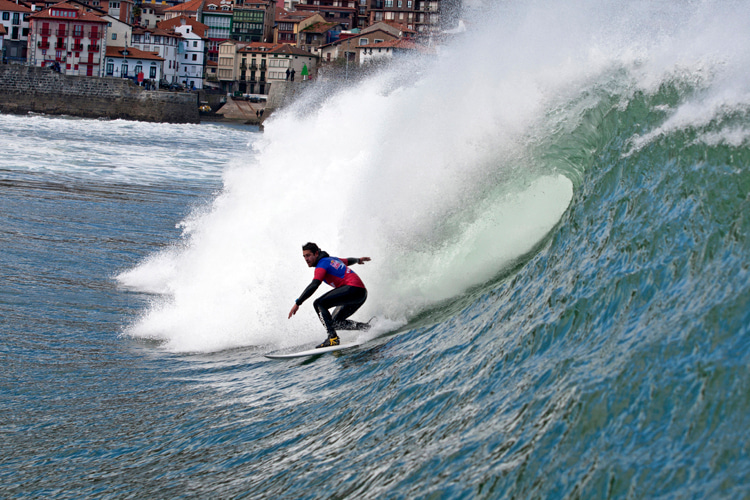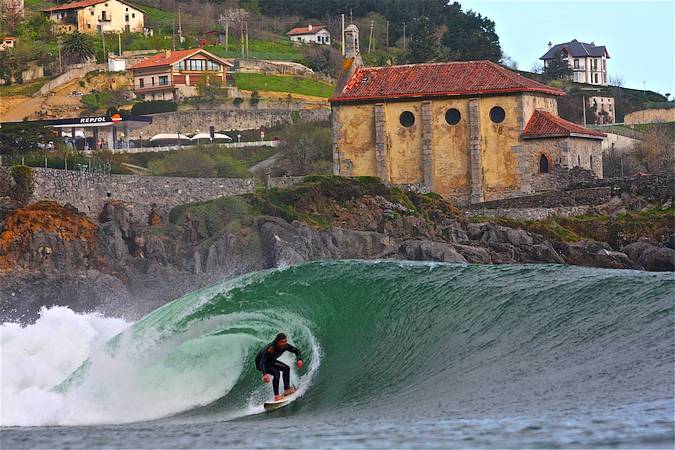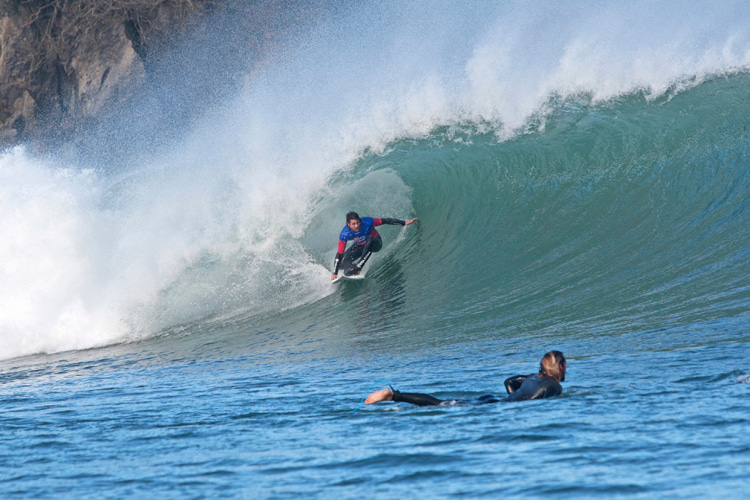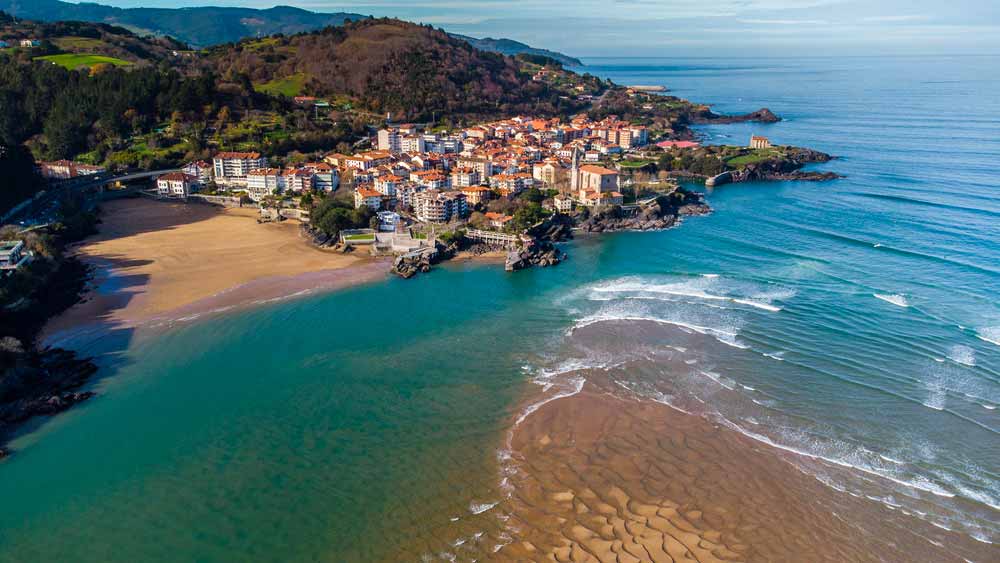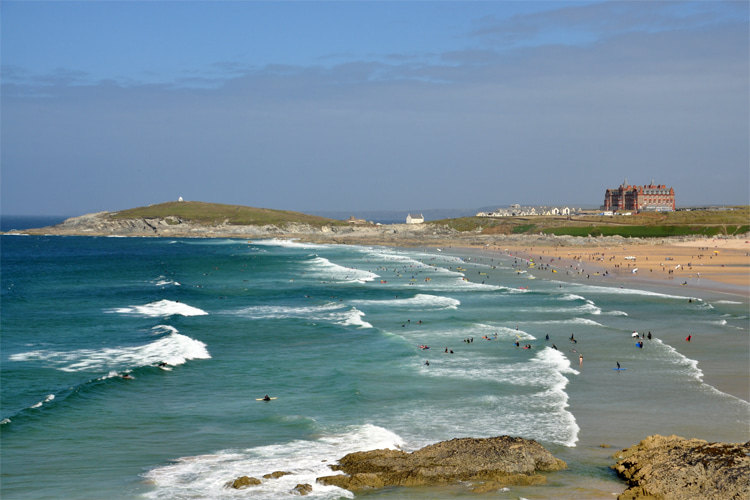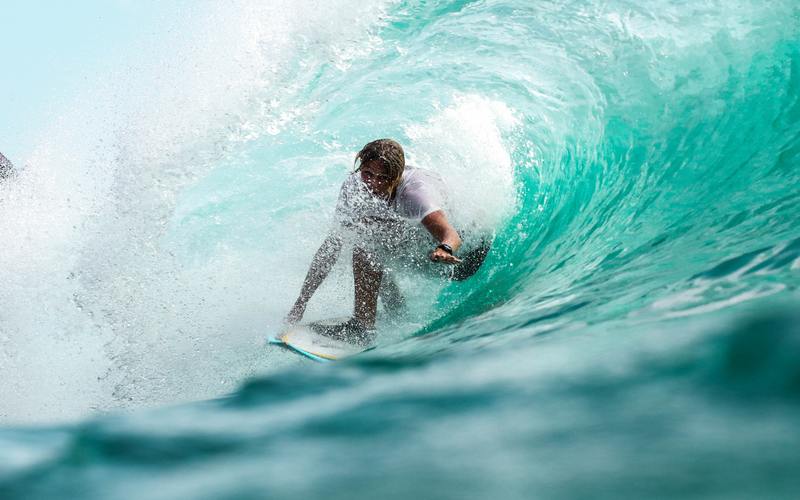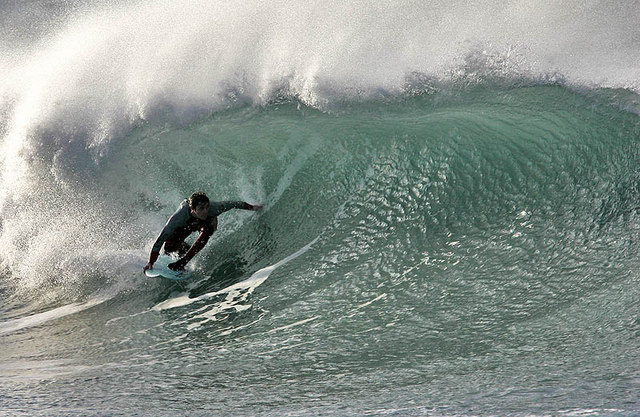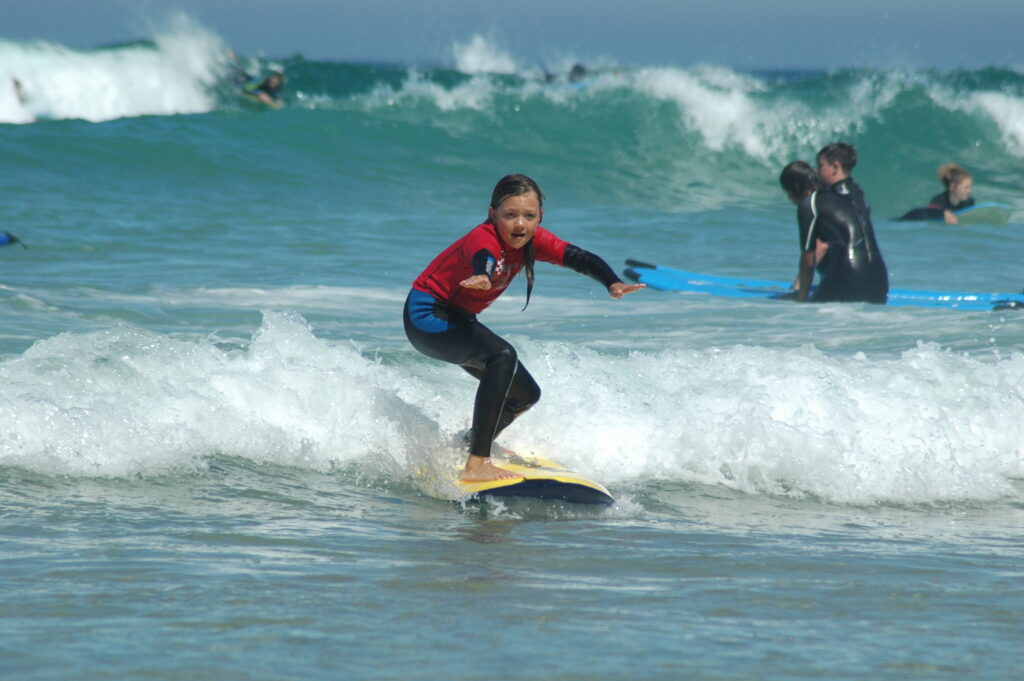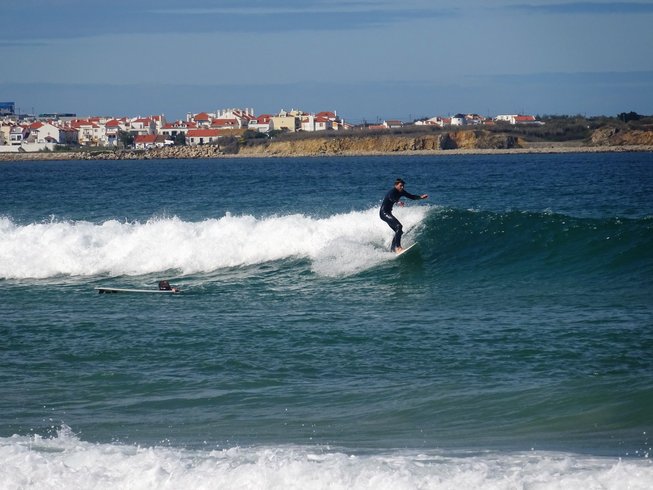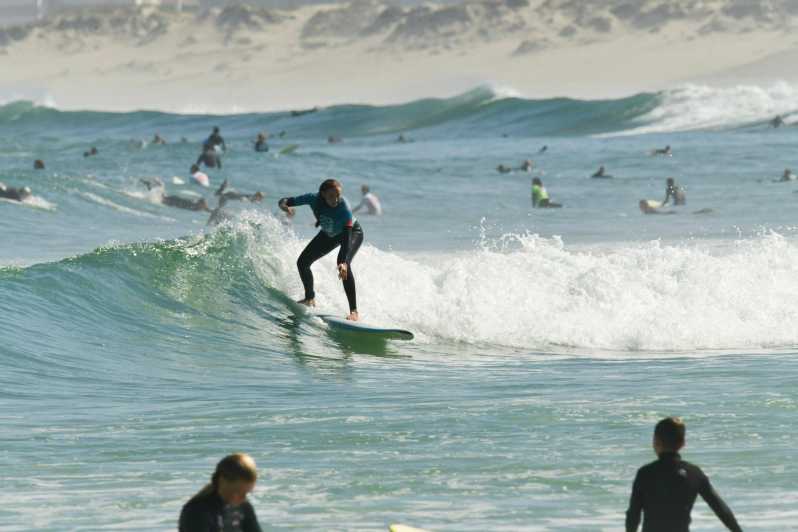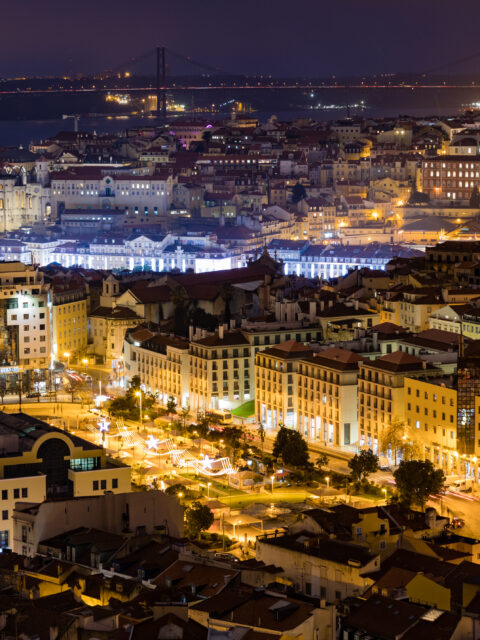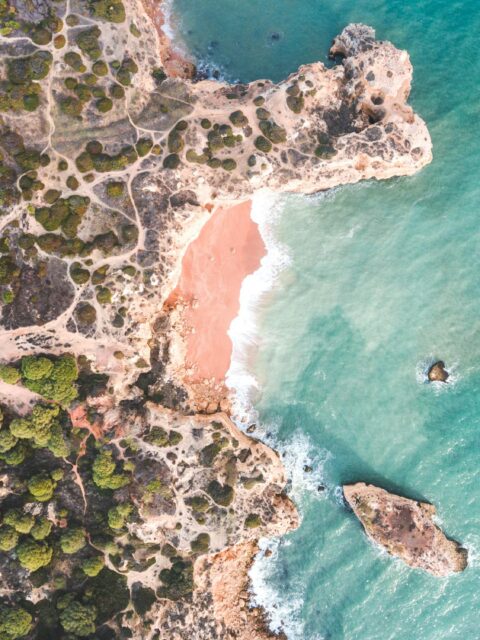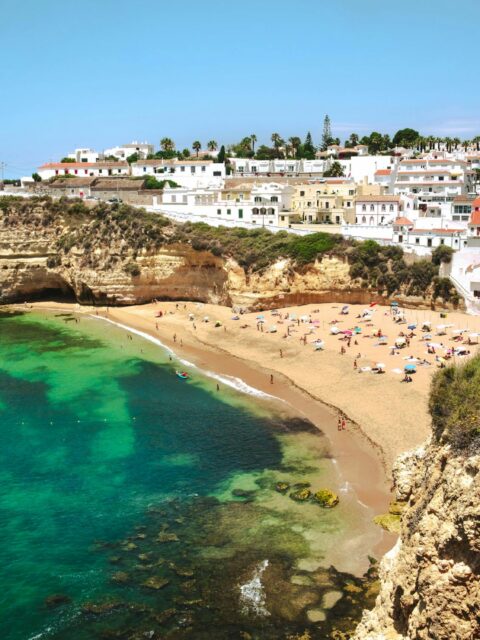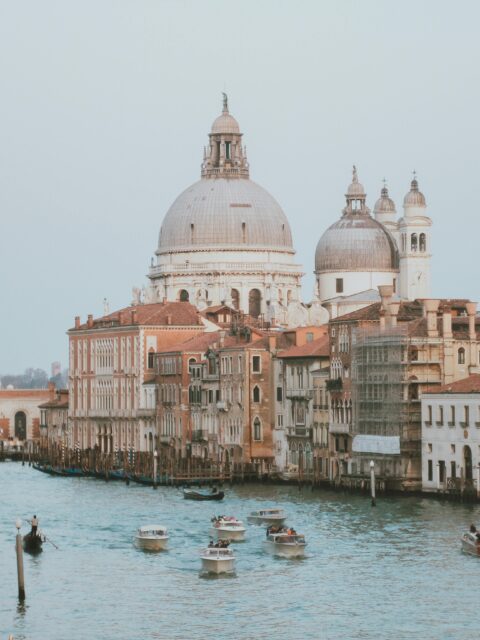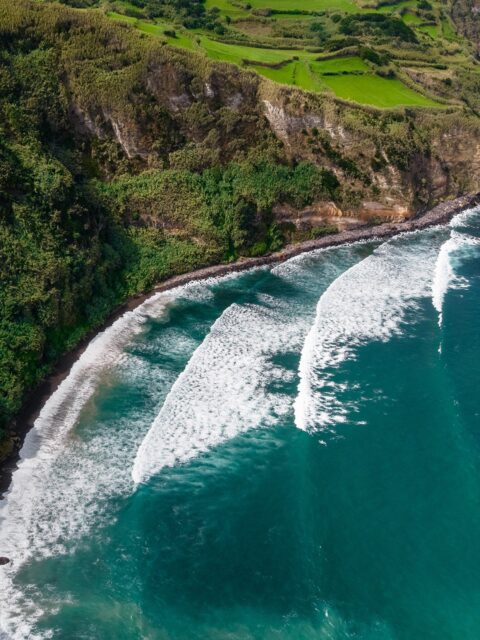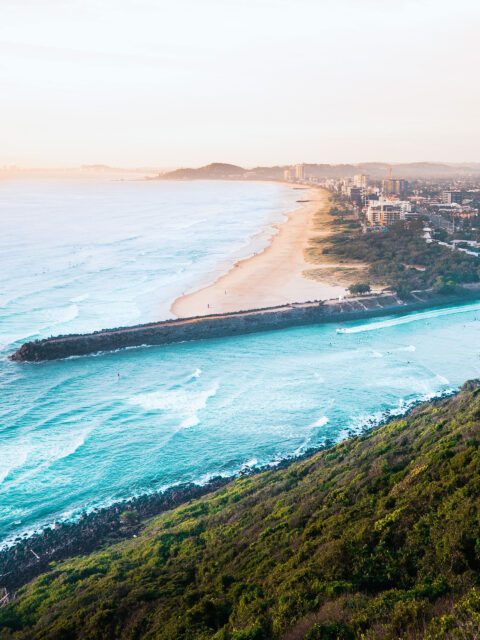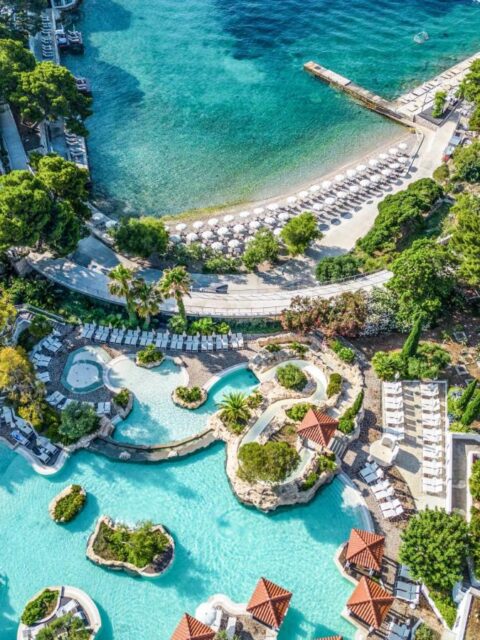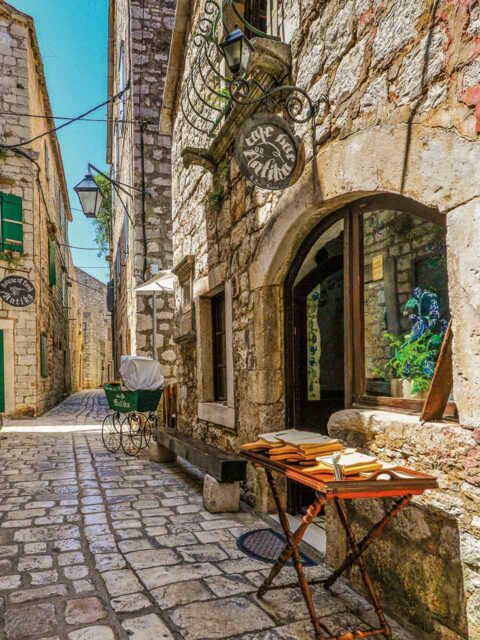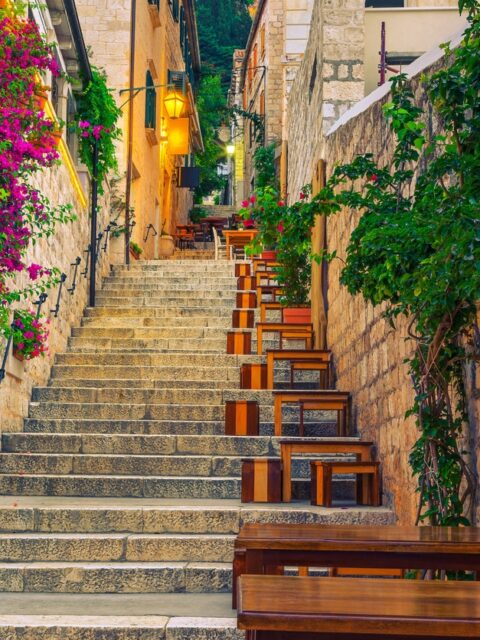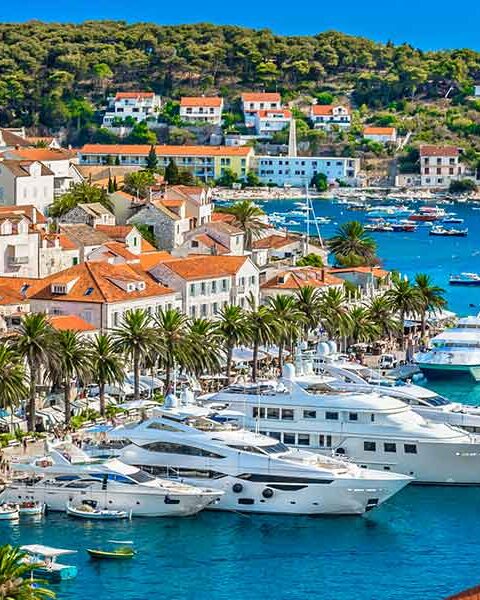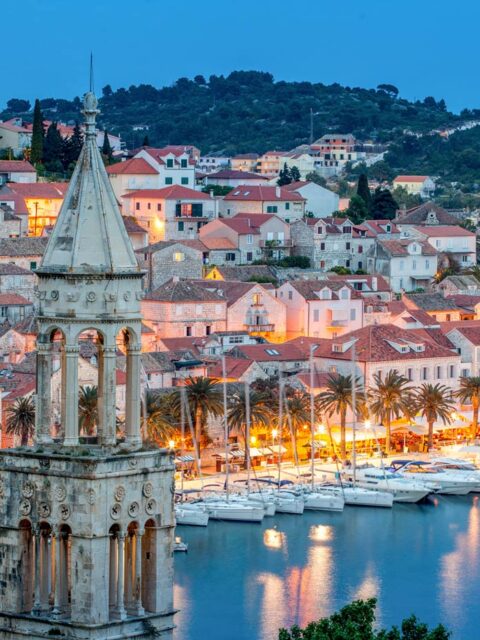Europe has a plethora of surfing spots that cater to all levels of surfers. From the chilly waters of the north to the sun-kissed beaches of the south, the continent is a surfer’s paradise. Here’s a countdown of the top 10 surfing spots in Europe, complete with details on how to get there and the difficulty level of each.
#10: Sennen Cove, England
Sennen Cove, located in Cornwall, England, is known for its consistent waves and stunning scenery. The sandy beach break makes it an excellent spot for beginners and intermediate surfers.
Difficulty Level: 4/10
What Makes it Good: Sennen Cove offers beautiful coastal views and a relaxed atmosphere. The consistent waves and sandy bottom make it perfect for learning and honing your skills.
Pro: The stunning scenery and friendly local community.
Con: The water can be quite cold, even in summer, so a wetsuit is necessary.
Getting there: Fly into Newquay Airport, then take a 1.5-hour drive southwest to Sennen Cove.
Best Time to Surf: Late Summer to Autumn (August to October)
Why: During late summer and autumn, Sennen Cove experiences more consistent and moderate swells, which are ideal for both beginners and intermediate surfers. The weather is relatively mild, and the crowds are smaller compared to the peak summer season.
Water Temperature: Cooler but manageable with a wetsuit.
9: Bundoran, Ireland
Bundoran in County Donegal is Ireland’s surf capital. Known for its powerful reef breaks, this spot is best suited for intermediate to advanced surfers.
Difficulty Level: 6/10
What Makes It Good: The town’s vibrant surf culture and frequent music festivals create a lively atmosphere. The waves are powerful and can provide excellent rides.
Pro: The strong, consistent waves and the lively local culture.
Con: The weather can be unpredictable, and the water is cold year-round.
Getting There: Fly into Dublin or Belfast, then take a 3-hour drive to Bundoran.
Best Time to Surf: Autumn (September to November)
Why: Autumn brings the biggest swells and most powerful waves to Bundoran, making it perfect for experienced surfers. The weather is still relatively mild compared to winter, and the surf conditions are at their peak.
Water Temperature: Cold, so a thick wetsuit is recommended.
8: Biarritz, France
Biarritz, situated on the Basque coast, offers consistent waves year-round. It’s a popular destination with both longboarders and shortboarders.
Difficulty Level: 5/10
What Makes It Good: Biarritz is known for its glamorous vibe, great food, and excellent surf shops. The waves are reliable and suitable for a range of skill levels.
Pro: The combination of good waves and a vibrant, upscale town.
Con: It can get crowded, especially during the peak summer months.
Getting There: Fly into Biarritz Airport, and the beaches are just a short drive away.
Best Time to Surf: Autumn (September to November)
Why: Biarritz experiences its best swells during autumn, with consistent and powerful waves that cater to a range of skill levels. The weather is pleasant, and the summer crowds have thinned out.
Water Temperature: Mild but cooling, so a wetsuit may be needed.
#7: Thurso East, Scotland
Thurso East is renowned for its powerful right-hand reef break. It’s one of Europe’s premier spots for experienced surfers looking for a challenge.
Difficulty Level: 8/10
What Makes It Good: The wave quality is exceptional, with long, powerful rides. The rugged, remote setting adds to the adventure.
Pro: High-quality waves and a less crowded surf scene.
Con: The cold water and harsh weather conditions.
Getting There: Fly into Inverness, then drive 2.5 hours north to Thurso.
Best Time to Surf: Autumn to Winter (September to February)
Why: Thurso East is renowned for its big waves, which are most prominent from autumn through winter. This period offers the best swell conditions for advanced surfers, although weather can be harsh.
Water Temperature: Very cold, requiring a thick wetsuit or even a drysuit.
6: Hossegor, France
Hossegor is known for its heavy, hollow beach breaks, making it a hotspot for professional surfers. The waves can get big, especially during autumn.
Difficulty Level: 7/10
What Makes It Good: Hossegor is a venue for major surfing competitions, and the waves are world-class. The town itself is lively with great nightlife.
Pro: High-quality, powerful waves and a vibrant surf culture.
Con: The waves can be intimidating for beginners, and it can get very crowded.
Getting There: Fly into Biarritz or Bordeaux, then drive 30 minutes or 1.5 hours respectively to Hossegor.
Best Time to Surf: Autumn (September to November)
Why: Hossegor experiences its best waves during autumn, with powerful beach breaks and a lively surf scene. The weather is still favorable.
Water Temperature: Cooler, requiring a wetsuit.
5: Ericeira, Portugal
Ericeira is a World Surfing Reserve with a variety of waves suitable for all levels. From beginner-friendly beach breaks to challenging reef breaks, it has something for everyone.
Difficulty Level: 5/10
What Makes It Good: The variety of surf spots within a small area is unparalleled. Ericeira also boasts a charming, traditional Portuguese village atmosphere.
Pro: Diverse surf spots and a picturesque town.
Con: Some spots can get crowded, especially during peak season.
Getting There: Fly into Lisbon, then drive 45 minutes northwest to Ericeira.
Best Time to Surf:Autumn (September to November)
Why: Ericeira offers excellent surf conditions during autumn when the swells are powerful and consistent. The weather is still warm, and the summer crowds have decreased.
Water Temperature: Comfortable with a wetsuit in early autumn, cooling down later in the season.
#4: Nazaré, Portugal
Nazaré is famous for its gigantic waves, some of the largest in the world. This spot is for expert surfers who are comfortable with extremely challenging conditions.
Difficulty Level: 10/10
What Makes It Good: Nazaré offers a unique chance to surf some of the biggest waves on the planet. The sheer power and size of the waves are awe-inspiring.
Pro: World-renowned big wave surfing.
Con: Extremely dangerous for anyone not highly experienced.
Getting There: Fly into Lisbon, then drive 1.5 hours north to Nazaré.
Best Time to Surf: Autumn to Winter (October to March)
Why: During autumn and winter, Nazaré experiences its most powerful swells, driven by the large North Atlantic storms. This period is when the waves can reach their maximum height, offering the iconic big wave conditions that Nazaré is famous for. The massive waves attract professional surfers from around the globe looking to tackle some of the biggest surfable waves on Earth.
Water Temperature: Cold, generally requiring a thick wetsuit or a drysuit to stay comfortable in the chilly Atlantic waters.
#3: Mundaka, Spain
Mundaka in the Basque Country is known for its long, barreling left-hand river mouth wave. It’s a favorite among experienced surfers.
Difficulty Level: 7/10
What Makes It Good: Mundaka’s wave is considered one of the best left-handers in the world. The ride can be long and thrilling.
Pro: Exceptional wave quality and long rides.
Con: The wave can be fickle, and the conditions need to be just right.
Getting There: Fly into Bilbao, then drive 45 minutes northeast to Mundaka.
Best Time to Surf: Autumn (September to November)
Why: Mundaka is famous for its world-class left-hand waves, which are most prominent during autumn. The wave conditions are typically at their best, and the weather is favorable.
Water Temperature: Cooler, so a wetsuit is needed.
#2: Fistral Beach, England
Fistral Beach in Newquay is the most famous surf spot in the UK, offering consistent waves and a vibrant surfing community. It’s suitable for all levels.
Difficulty Level: 5/10
What Makes It Good: Fistral Beach hosts numerous surf competitions and events, adding to the lively atmosphere. The waves are reliable and fun.
Pro: Great community and consistent waves.
Con: Can be crowded, particularly during the summer and events.
Getting There: Fly into Newquay Airport, and the beach is a short drive away.
Best Time to Surf: Autumn (September to November)
Why: Fistral Beach sees its best waves during autumn, with consistent swells and milder weather. The summer crowds are gone, and the surf conditions are ideal.
Water Temperature: Cool, requiring a wetsuit.
#1: Peniche, Portugal
Peniche is home to the renowned Supertubos beach, offering powerful and hollow waves. This spot attracts surfers from around the world, especially during the autumn swells.
Difficulty Level: 6/10
What Makes It Good: Supertubos is often referred to as the “European Pipeline” due to its heavy, barreling waves. The variety of breaks in the area means there’s always a wave to catch.
Pro: High-quality waves and a range of surf spots.
Con: It can get very crowded, especially during peak seasons and events.
Getting There: Fly into Lisbon, then drive 1 hour north to Peniche.
Best Time to Surf: Autumn (September to November)
Why: Peniche is renowned for its excellent surf conditions during autumn, when the swells are powerful and consistent. The weather is still pleasant, and the surf scene is vibrant.
Water Temperature: Comfortable with a wetsuit in early autumn, cooling down later in the season.
Honourable Mentions
While the top 10 list features some of Europe’s premier surfing destinations, there are several other remarkable surf spots that are worth considering. These honourable mentions offer diverse conditions, stunning settings, and unique surfing experiences.
Madeira, Portugal
Known for its dramatic volcanic landscapes and powerful reef breaks, Madeira provides consistent waves suitable for intermediate to advanced surfers. The island’s rugged beauty, clear waters, and less crowded surf scene make it an attractive choice for those seeking a more adventurous surf experience. However, the challenging reef breaks require a certain level of skill and caution.
Best Time to Surf: Autumn to Winter (September to March)
Why: Madeira experiences consistent swells and powerful waves during autumn and winter. This period is ideal for more advanced surfers due to the size and strength of the waves.
Water Temperature: Mild to cool, so a wetsuit is necessary.
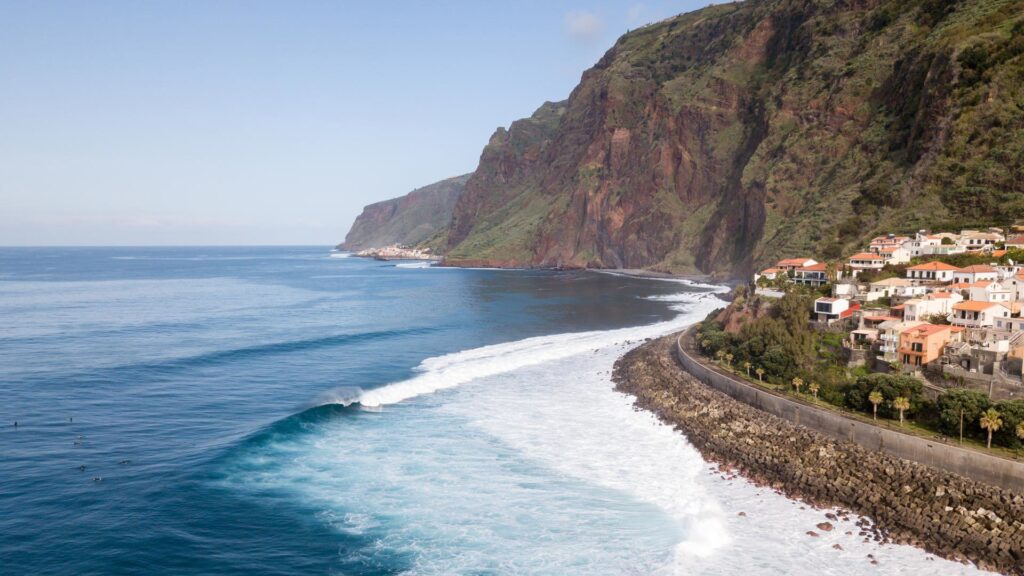
Fuerteventura, Canary Islands, Spain:
Fuerteventura stands out for its year-round warm weather and varied surf spots, ranging from mellow beach breaks to challenging reef breaks. The island’s consistent swell and favorable climate make it a top destination for surfers of all levels. Its beautiful landscapes and warm waters add to its appeal, although some of the more popular spots can become crowded, particularly in winter.
Best Time to Surf:Autumn to Spring (September to April)
Why: Consistent swells and warm water make Fuerteventura a great year-round surf destination, with autumn and spring offering the most favorable conditions.
Water Temperature: Warm, making a thin wetsuit optional.
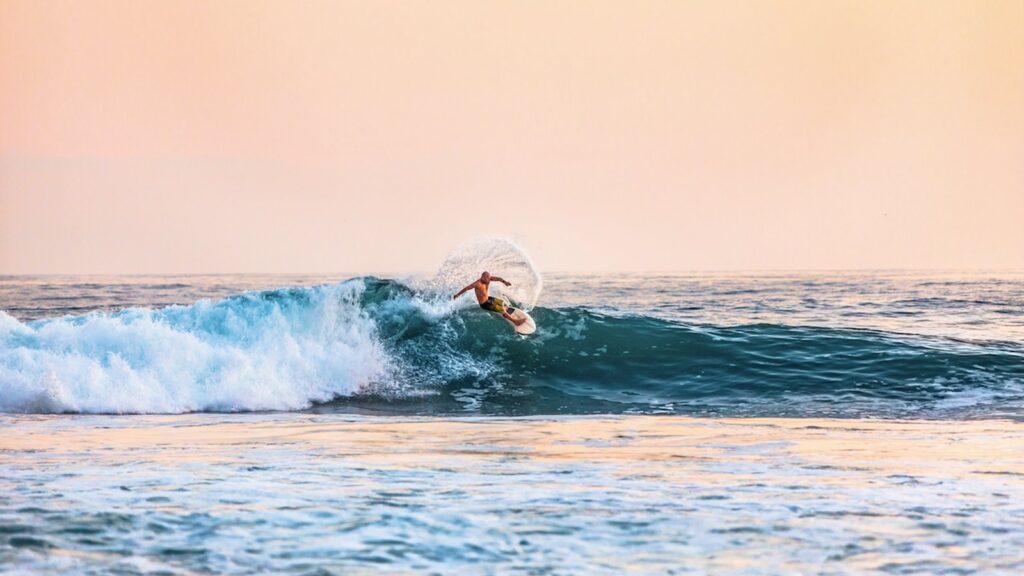
Lanzarote, Canary Islands, Spain
Lanzarote is renowned for its volcanic terrain and excellent surf conditions, with powerful waves and a variety of breaks. The island offers a range of options from beginner-friendly spots to more challenging waves. The year-round mild climate and reliable swells make it a favorite among surfers, but the waves can be demanding for less experienced riders.
Best Time to Surf: Autumn to Spring (September to April)
Why: Lanzarote has reliable surf throughout these months, with autumn and spring providing the best swell and weather conditions.
Water Temperature: Warm, with a thin wetsuit or boardshorts often sufficient.
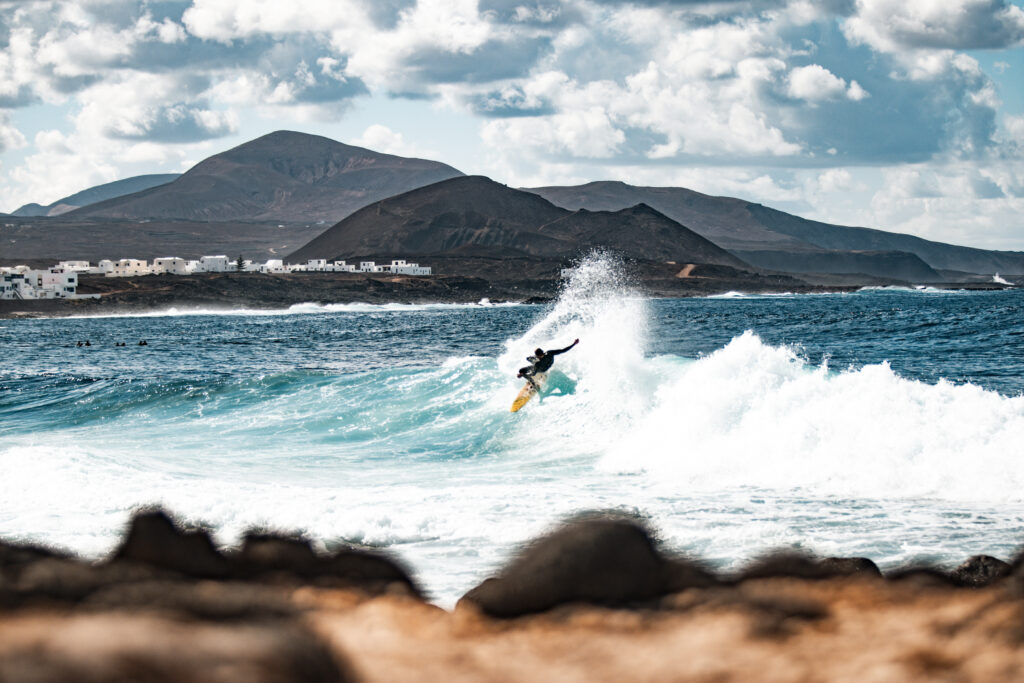
Each of these honourable mentions offers its own unique surfing experience and charm. Whether you’re looking for dramatic landscapes, consistent swells, or a more relaxed vibe, these spots provide excellent alternatives to the top 10 destinations, showcasing the diverse surfing opportunities available across Europe.
Planning a surf trip?
STAYS
FLIGHTS
ACTIVITIES
ESIM
What’s your favorite surf spot in Europe?
Europe’s coastline offers some of the most diverse and exciting surf spots, from the rugged cliffs of Scotland to the sunny shores of the Canary Islands. Whether you’re seeking powerful waves, picturesque landscapes, or a vibrant surf culture, this continent has something to suit every surfer’s needs. From the bustling beaches of Biarritz to the hidden gems of Madeira and Fuerteventura, each location presents unique conditions and experiences.
The best time to visit each spot varies, providing excellent surf conditions throughout the year, whether you’re after consistent swells or warm waters. By understanding the seasonal patterns and what each location has to offer, you can plan your surf trips to maximize your time on the waves and enjoy the local ambiance.
We’d love to hear from you! What’s your favorite surf spot in Europe? Did we miss any of your top picks? Share your thoughts in the comments below and let us know if there are any hidden gems we should add to our list. Happy surfing! 🌊🏄♂️
